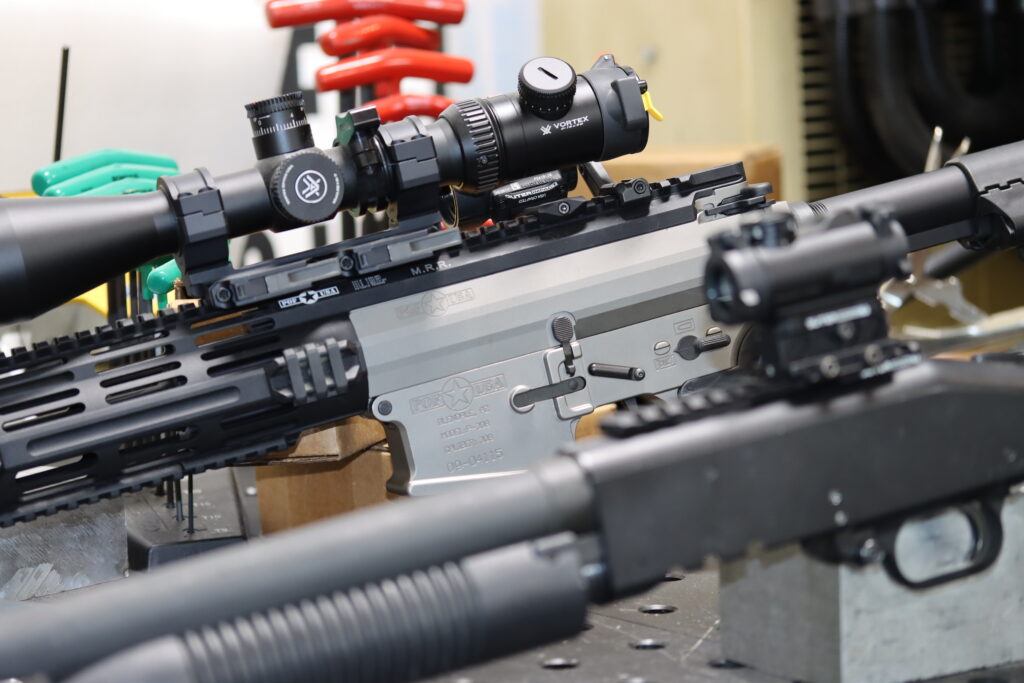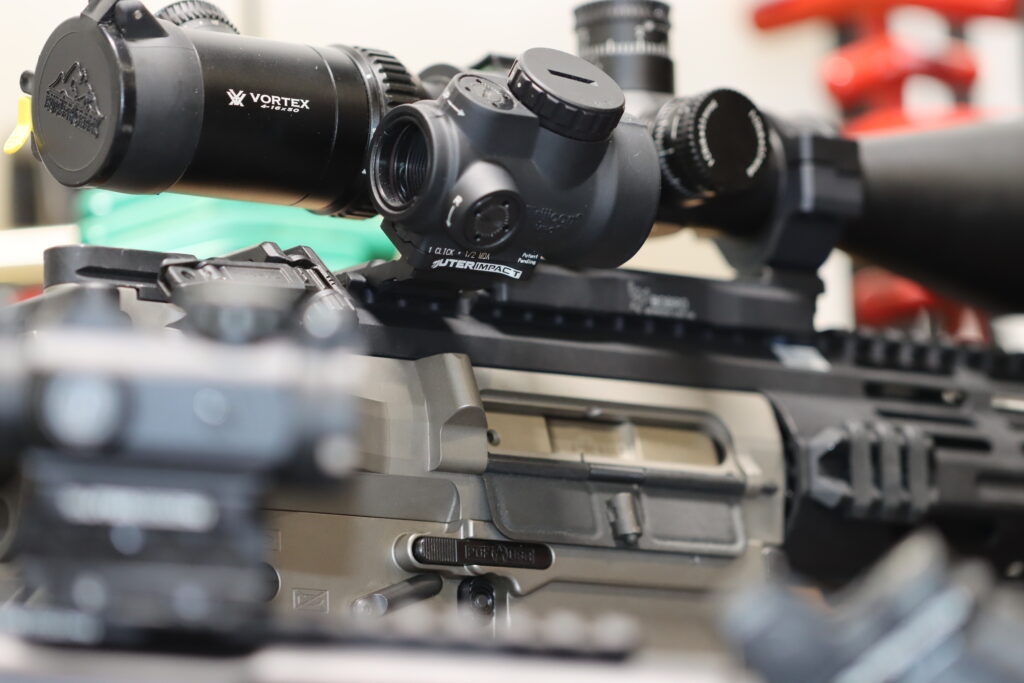Prismatic, Reflex, And Holographic – Comparing The Remarkable Red Dot Tech
Introduction: When it comes to red dot optics, the options can seem overwhelming. Prismatic sights, reflex sights, and holographic sights each offer unique features and advantages. In this guide, we’ll compare prismatic sights with reflex and holographic sights, helping you find the ideal option for your shooting requirements. All OuterImpact mounts are precision machined from aircraft grade billet 7075 aluminum and backed by a Lifetime Warranty.

Table of Contents:
- Introduction
- What Are Prismatic Sights?
- Reflex Sights: An Overview
- Holographic Sights: A Closer Look
- Comparing Prismatic, Reflex, and Holographic Sights
- Design and Technology
- Reticle Type and Clarity
- Field of View
- Eye Relief
- Durability and Battery Life
- Price Point
- Pros and Cons of Prismatic Sights
- Pros and Cons of Reflex Sights
- Pros and Cons of Holographic Sights
- Conclusion
What Are Prismatic Sights? Prismatic sights utilize a prism to reflect light and create an illuminated reticle. They offer a compact design with an etched reticle, providing excellent clarity and durability.
Reflex Sights: An Overview Reflex sights, also known as red dot sights, project a LED or laser-illuminated reticle onto a single lens. They offer unlimited eye relief and are prized for their simplicity and fast target acquisition.
Holographic Sights: A Closer Look Holographic sights use holographic technology to project a reticle onto a transparent window. They offer precise aiming and versatility in various shooting conditions.
Comparing Prismatic, Reflex, and Holographic Sights:
| Prismatic Sights | Reflex Sights | Holographic Sights | |
| Design and Technology | Utilizes prism technology | LED or laser projection | Holographic reticle projection |
| Reticle Type | Etched reticle with illumination | LED or laser-illuminated reticle | Holographic reticle projection |
| Field of View | Narrower field of view | Wide field of view | Typically narrower field of view |
| Eye Relief | Moderate eye relief | Unlimited eye relief | Unlimited eye relief |
| Durability | Rugged construction | Rugged and durable | Generally robust construction |
| Battery Life | Longer battery life | Longer battery life | Usually shorter battery life |
| Price Point | Mid to high price range | More affordable | Generally higher price point |
Pros and Cons of Prismatic Sights:
| Pros | Cons | |
| Pros | – Excellent clarity and durability | – Narrower field of view |
| – Moderate eye relief | – Mid to high price range | |
| Cons | – Mid to high price range |
Pros and Cons of Reflex Sights:
| Pros | Cons | |
| Pros | – Wide field of view | – Slightly less precise reticle |
| – More affordable | – More limited reticle options | |
| – Unlimited eye relief | ||
| Cons | – Slightly less precise reticle | |
| – More limited reticle options |
Pros and Cons of Holographic Sights:
| Pros | Cons | |
| Pros | – Precise reticle projection | – Generally higher price point |
| – Versatile for various conditions | – Usually shorter battery life | |
| Cons | – Generally higher price point | – Typically narrower field of view |

Conclusion: Prismatic, reflex, and holographic sights each have their own strengths and weaknesses. Consider factors such as clarity, field of view, durability, and price when choosing the right red dot optic for your shooting needs. Whether you prioritize clarity and durability with prismatic sights, wide field of view with reflex sights, or precise reticle projection with holographic sights, there’s an option to suit every shooter’s preferences. You can read more of our red dot series here.
